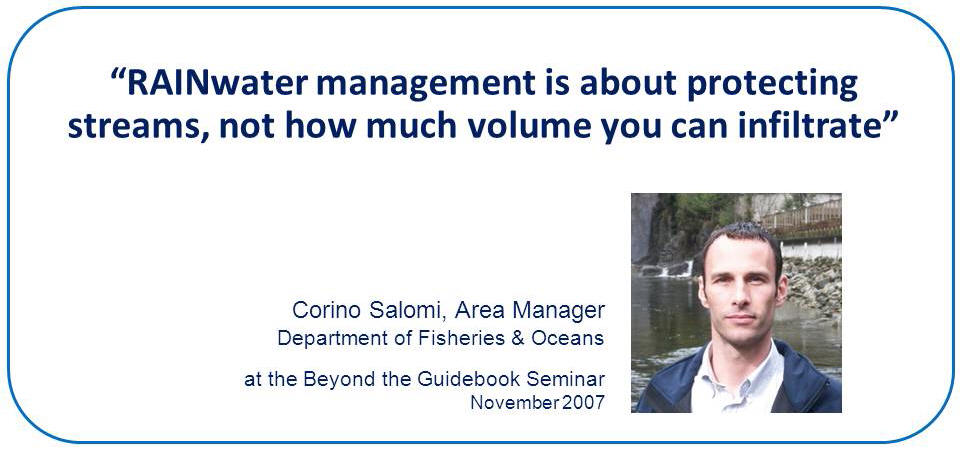Application of the “DFO Urban Stormwater Guidelines” has evolved over the past decade to protect stream health
Note to Readers:
The following excerpt is from a story posted on the Green Infrastructure Community-of-Interest. The full story provides context for the “DFO Urban Stormwater Guidelines” – how they set a direction in 2000; how they have evolved into “Beyond the Guidebook”; and how the Water Balance Model is a tool to correlate runoff volume management with stream erosion and water quality outcomes. The goal is protect stream health.
“DFO Guidelines” Set a Direction in 2000
 “We are moving from guidelines to tools,” states Corino Salomi of the Department of Fisheries and Oceans (DFO) . He is Area Manager, Oceans, Habitat & Enhancement Branch, Lower Fraser Area. .
“We are moving from guidelines to tools,” states Corino Salomi of the Department of Fisheries and Oceans (DFO) . He is Area Manager, Oceans, Habitat & Enhancement Branch, Lower Fraser Area. .
“It helps to look back to understand how we got to here. In November 2000, DFO released the 4-page Urban Stormwater Guidelines and Best Management Practices for Protection of Fish and Fish Habitat, Draft Discussion Document. That document set a direction.”
“By 2007, however, we had concerns about how the document was being interpreted and applied. The Beyond the Guidebook initiative initiated a course correction that will help local governments and the development community establish what level of rainwater runoff volume reduction makes sense at the site, catchment and watershed scales.”
“The objective is protect stream health, which is broader than how much volume one can infiltrate on a particular development.”
To Learn More:
To read the complete story posted on the Green Infrastructure Community-of-Interest, click on Application of the “DFO Urban Stormwater Guidelines” has evolved over the past decade to protect stream health.
Posted September 2010


